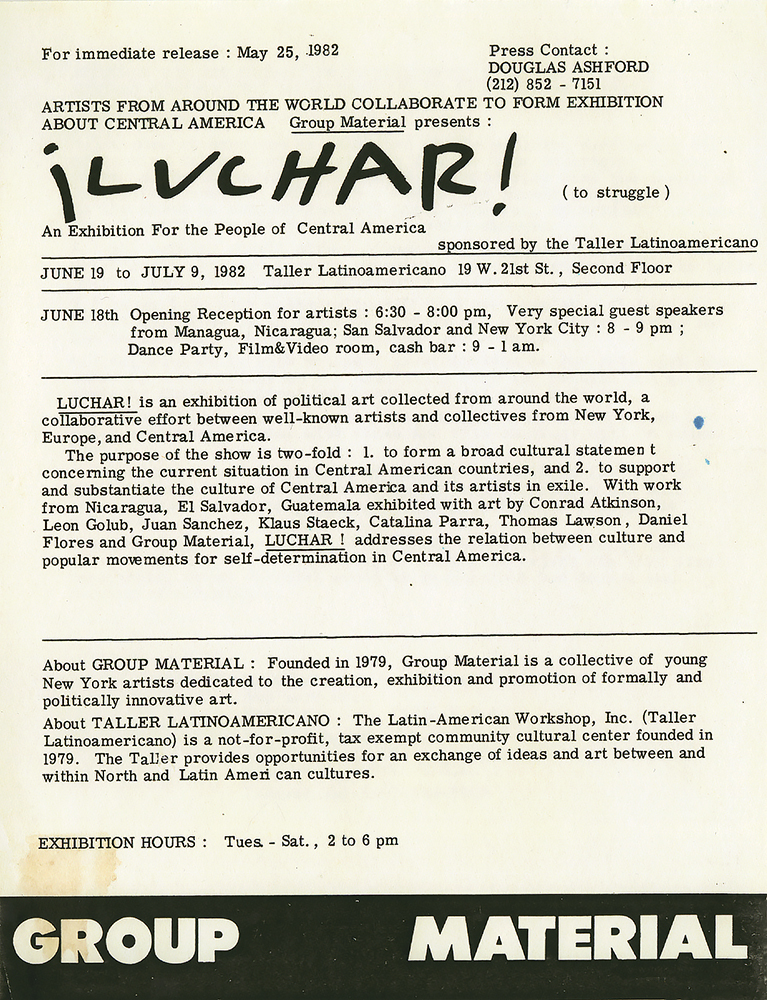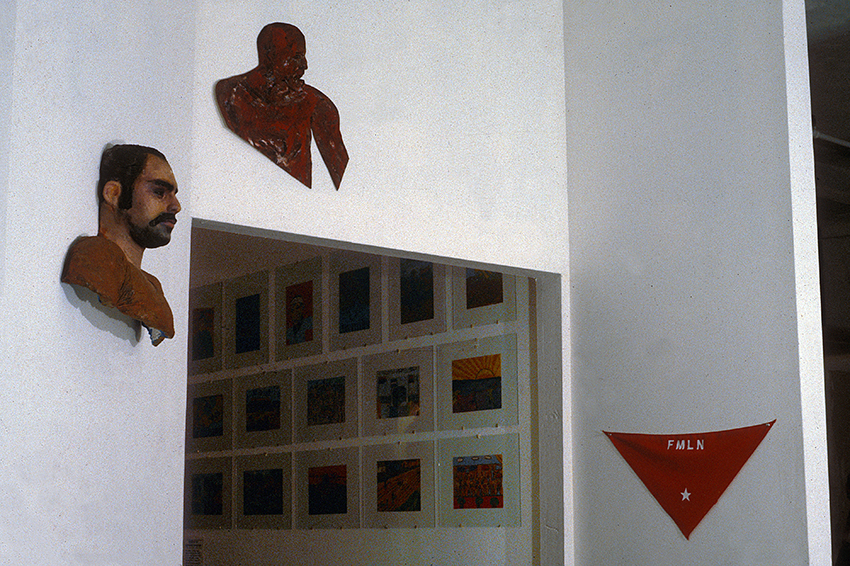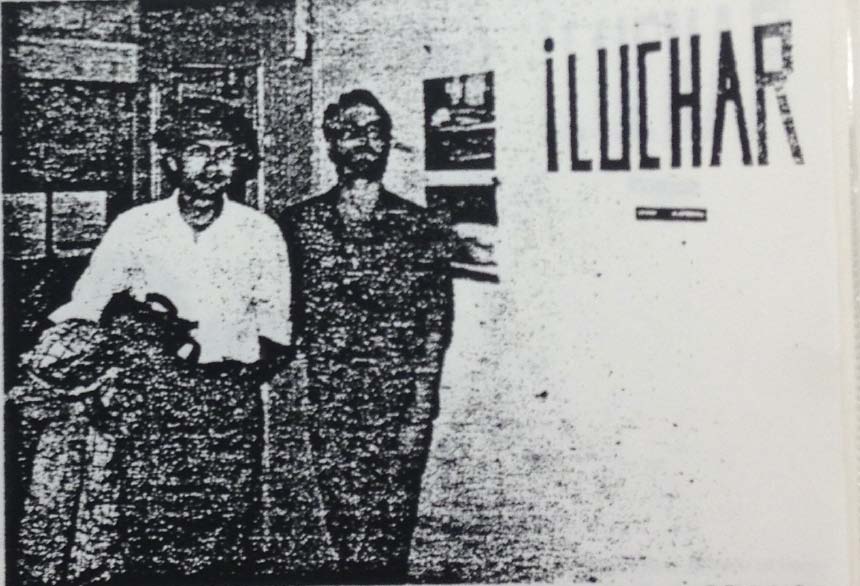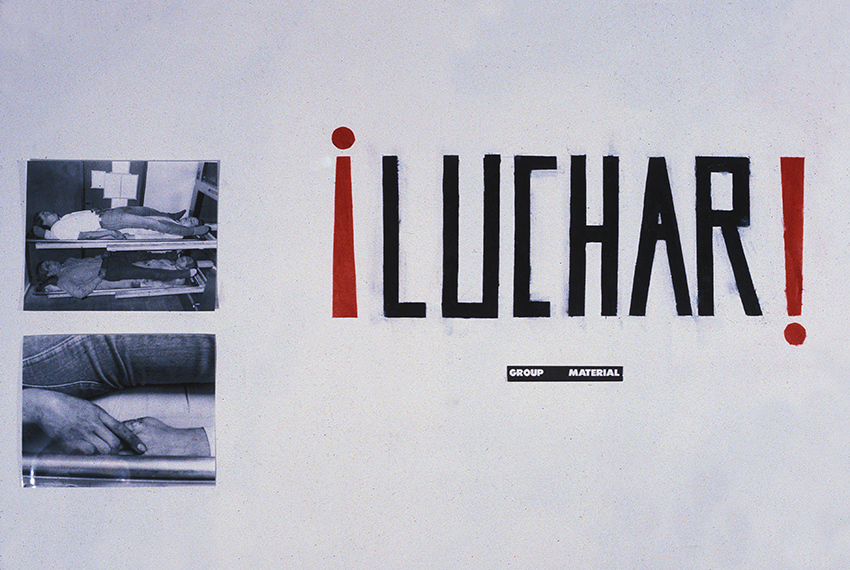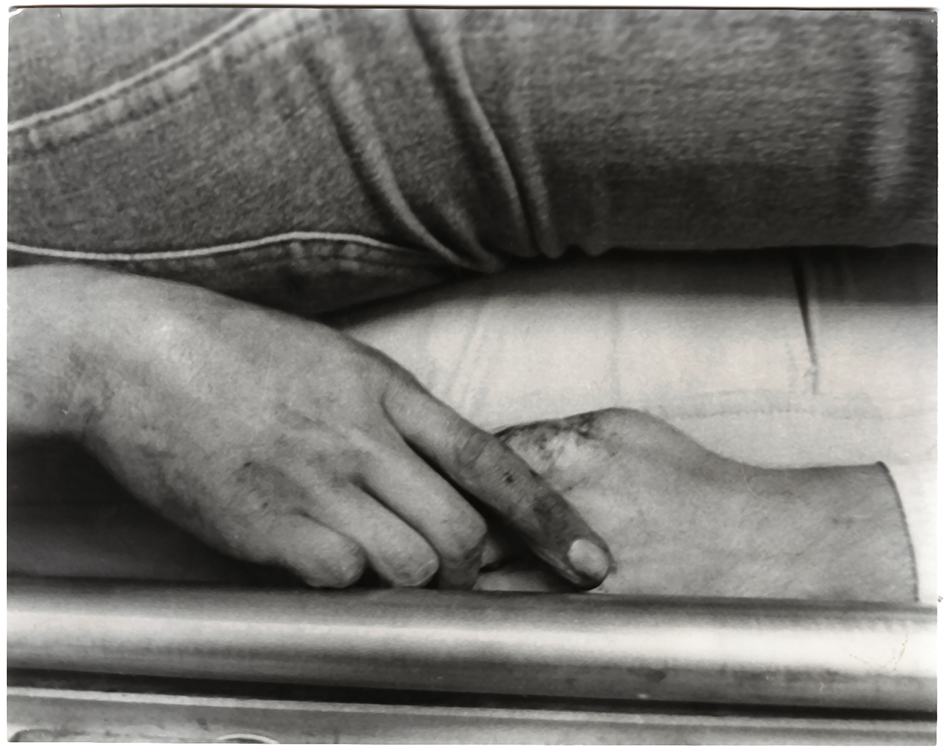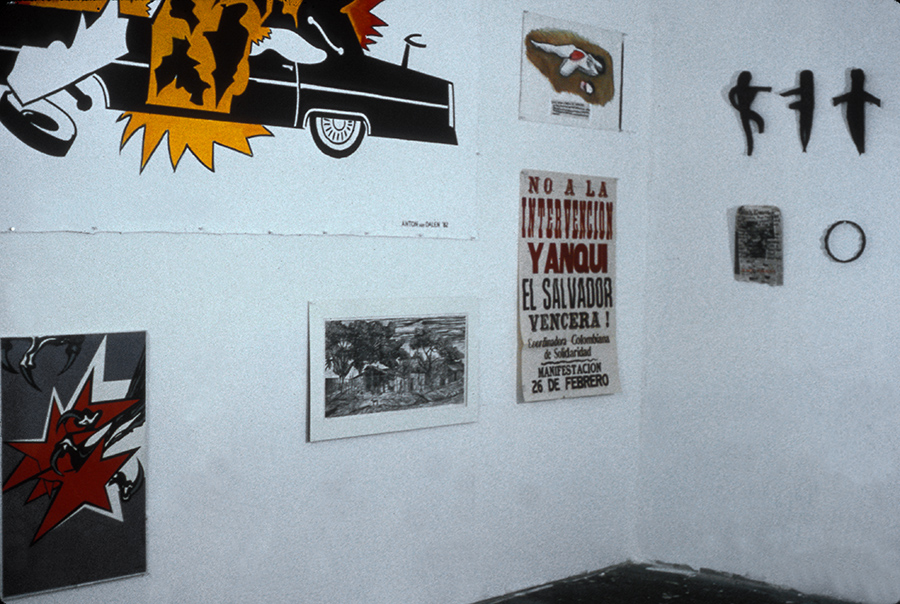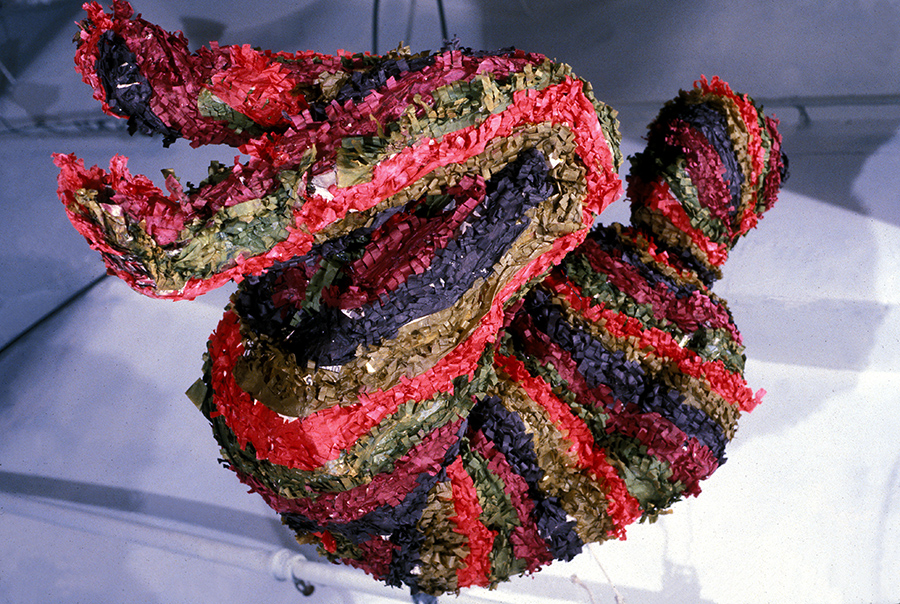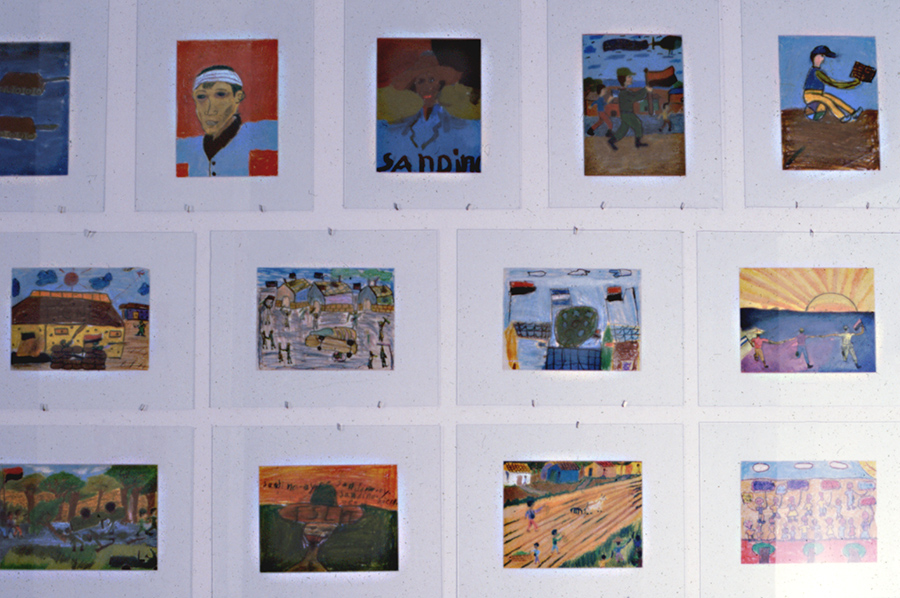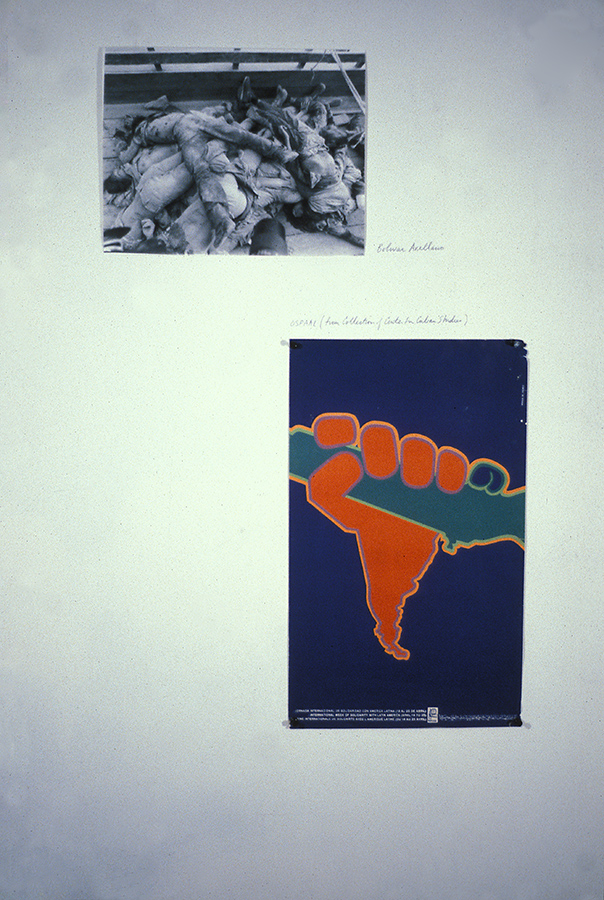LUCHAR! An Exhibition for the People of Central America. Taller Latinoamericano, New York. 19 June – 9 July 1982.
This show would have been impossible without the intense engagement of Central American artists in exile in NY, particularly the El Salvadorian poet and filmmaker Daniel Ascencio Flores, who met Ashford earlier that year. The exhibition acted as a socially interactive space in which 27 artists from both north and south America contributed work to be exhibited in one contiguous space. Seeing a painting by Nancy Spero next to an image by the Cuban design collective OSPAAL or drawings by Nicaraguan children next to a John Ahearn, created a sense of shared destiny essential to aesthetic experience and political emancipation. At the opening, representatives from the FDR (Revolutionary Democratic Front)/FMLN (Farabundo Marti National Liberation front), organizers of solidarity organizations in the US, and New York journalists spoke between performances and partying. Today it may seem unusual to see a room full of simultaneous artistic and political activity – in which each critique and celebrates the function of the other. Indeed, it is crucial to point out in these days of occasional mindless nostalgia that such a multi-form event was rare in 1982 as well. At that time, the critical function of art was overcome by the neo-expressionist musings of yet another set of white male “visionaries.” A revived gallery system was set to receive them, flush with the new money of a youthful set of junk-bond dealers and international money marketers. The uniqueness of LUCHAR! and the events surrounding it was not lost on the participants. Work began immediately to plan larger events around the founding of a new organization: INALSE, the Institute of Arts and Letters of El Salvador in Exile. That effort eventually led to the founding and execution of Artists’ Call Against US Intervention in Central America, a set of organizing bodies that focused on a series of museum and gallery exhibitions, poetry readings, musical performances, magazine articles. public demonstrations, art events. and educational. lectures. The primary purpose of the effort was to physically demonstrate sup port for the popular movements of the region and to resist the interventionist policies of the US government. What set the Artists’ Call phenomenon as dis tinct from others was its physical scale and social breadth. The scale can be described by the lists themselves – the number of artists exhibiting works, the number of poetry readings and concerts, the thousands of dollars raised and sent to the region. Most importantly, the making public of common artistic aspirations joined a growing public consciousness against the US government’s wars in the region.
Interview with Ascensio from Bomb magazine _(link)
Review in Village Voice, Lucy Lippard _(link)


